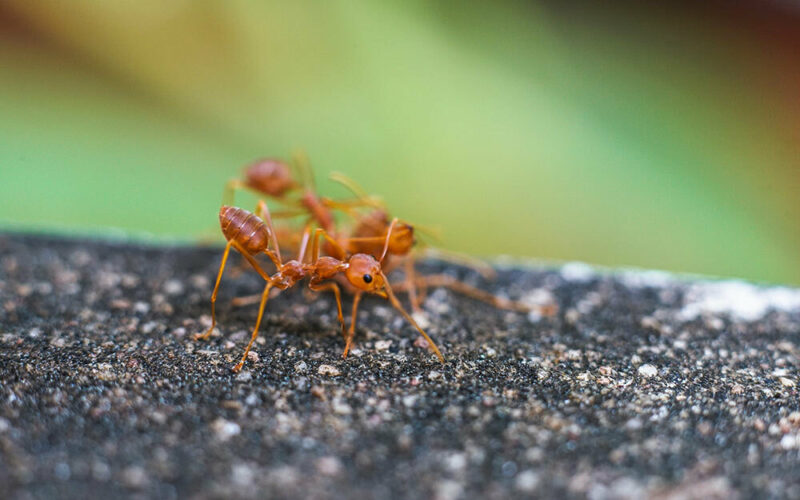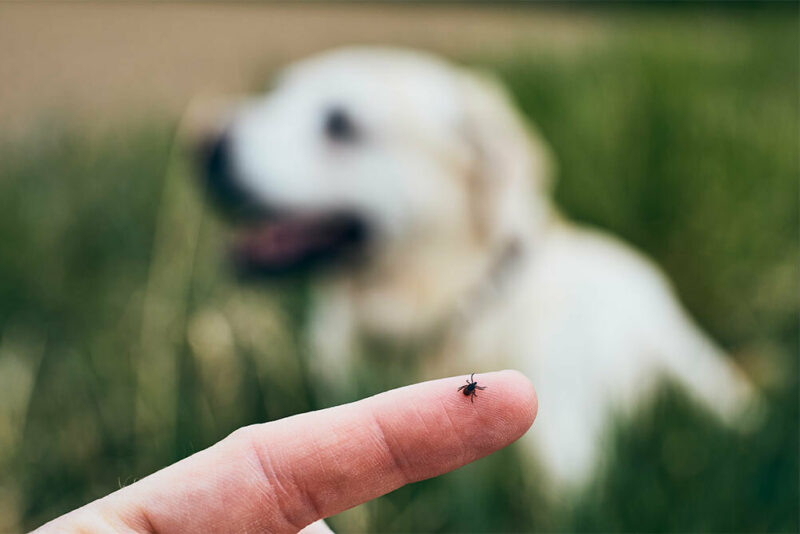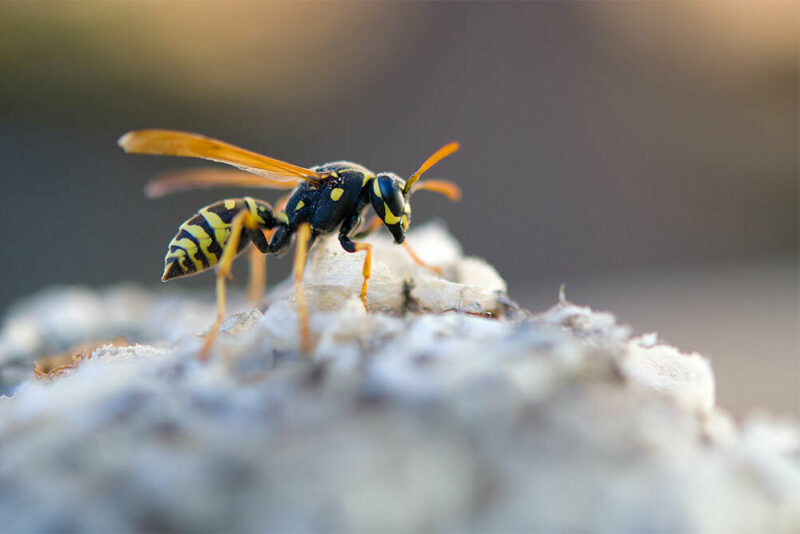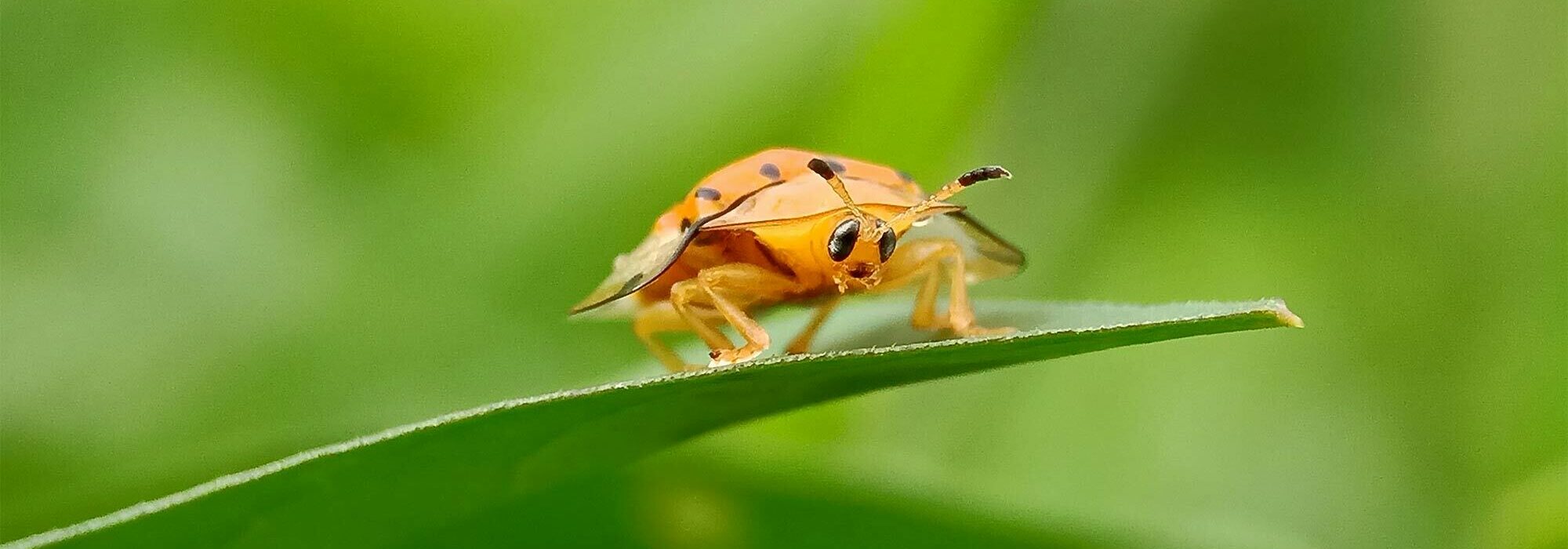Article Excerpt
As if the heat weren’t enough, summer in Texas is also breeding season for a bunch of creepy bugs. Thankfully, they're happy to remain outside your home.
Texas summers evoke happy thoughts like swimming pools or snow cones. Other features of Texas summers, like the relentless screaming of cicadas, aren’t as endearing. Certain critters seem to love the Texas heat, and they emerge in vast numbers once the temperatures start venturing toward 100.
While these bugs are on the creepy side, not all of them are dangerous. You just have to know which ones to avoid. Plus, since they like the heat for some reason, most of them don‘t particularly want to come into your home. Read on to learn more about a few of Texas’ heat-loving pests.
Creepy Crawlies
These are common critters that tend to make appearances in many parts of Texas in the summer months. Apparently, 100+ degree temperatures put these weirdos in the mood to reproduce.
Aphids
Aphids are small insects that feed on sap from plants. If you have a garden, keep an eye out for them. They’re not harmful to people or pets, but they can cause serious damage to a wide range of plants in your landscaping. They have several predators that can help keep their numbers in check, including ladybugs and birds.
If you have an aphid problem among your garden, try creating an oasis for birds near your plants in hopes they’ll treat them as snacks. You can also simply spray a strong stream of water all over your plants every time you water them. The aphids will fall off. Prevent them from climbing back on by gently spraying the plants with a little soapy water.
![Photo by Shipher Wu (photograph) and Gee-way Lin (aphid provision), National Taiwan University, on Wikimedia Commons [Creative Commons] aphid](/images/articles/_generalPhotoStandard/aphids.jpg)
Photo by Shipher Wu (photograph) and Gee-way Lin (aphid provision), National Taiwan University, on Wikimedia Commons [Creative Commons]
Harvest Lice
Harvest lice, colloquially known as “chiggers” refers to the larval stage of several species of mites found in wooded, grassy, or swampy areas of Texas. Mites are arachnids, not insects, meaning that they are more closely related to spiders and scorpions than ants or mosquitoes.
Chiggers are too small to see with the naked eye, but they pack a wallop – especially as they often travel in swarms. Chigger bites can produce itchy and painful rashes. You’re much more likely to encounter them out in rural, wilderness areas. If you must venture out into tall grass, tall socks and long pants can help prevent a painful run-in with these boogers.
Cicadas
No summer in Texas is complete without the cacophony of the cicadas. In other parts of the country, cicadas only come out around once every decade or two, but Texas is home to “annual cicadas.” Members of these species emerge every summer. While they are loud, big, and rather disconcerting to the eye, cicadas are not harmful to us.
![Photo by Marcello Consolo on Wikimedia Commons [Creative Commons] cicada](/images/articles/_generalPhotoStandard/Cicada.jpg)
Photo by Marcello Consolo on Wikimedia Commons [Creative Commons]
Fire Ants
Everything about fire ants sounds scary, starting with the name “fire ant.” Their full name is the “red imported fire ant.” Their scientific name, Solenopsis invicta, sounds like an evil magic spell. As their longer English name suggests, they are not native to Texas. They arrived here around the 1950s, mostly likely from Brazil via Alabama. Their bites produce painful welts, and they are known for aggressive attacks.
Fire ants present a different challenge in summer from the other critters on this list. The problem with fire ants in summer is that they can often be much harder to spot. Fire ants tend to build rather large, conspicuous mounds, but during the summer months, they burrow deeper into the soil to get away from the heat. They may return to the surface quite rapidly if it rains in order to get away from groundwater. It is not uncommon to step on a fire ant mound in progress, which is no fun at all.

Mosquitoes
Texas is home to more than 80 species of mosquitoes. Not all of them will bite humans, but the rest of them are among the state’s most troublesome pests. They are most active in the summer and early fall.
Mosquito bites are itchy and annoying at best. They may also be vectors for some nasty diseases. The West Nile and Zika viruses have been connected to mosquitoes in Texas. They transmit enough diseases in other parts of the world, including malaria, to rank as the world’s deadliest animal!

Ticks
Ticks are arachnids that, much like mites, are parasitic. They feed on the blood of various mammal species. In Texas, this may include cattle and other livestock, dogs and cats, and humans. They may be found in almost any environment in Texas, but they are probably most common in overgrown areas.
Once they have begun feeding, ticks can be difficult to remove. Some tick species will continue feeding until their bodies become engorged and distended. They can also transmit diseases to humans and other mammals. Lyme disease is commonly associated with ticks. Other tick-borne diseases include Rocky Mountain Spotted Fever, anaplasmosis, and tularemia.

Wasps
Many species of wasps call Texas home. Many of them have a painful sting, but unless you have an allergy to bee or wasp stings, they usually don’t cause serious or long-term harm to people. Wasps actually play an important role in the Texas ecosystem. They can pollinate plants just like many kinds of bees, and they prey on other insect species.

Keeping summer pests out of your home!
Unless you consistently leave sugary food and drinks out in the open for several days at a time, the pests listed here have little interest in becoming a resident of your home. Unlike cockroaches, silverfish, and some species of ants, these critters tend to be happier outside in the heat. That doesn’t mean they’d never come inside if given the opportunity, of course.
Keeping these pests out of your home is often as simple as denying them entry. Keep doors and windows closed unless you have a screen. Check for gaps in your door frames and caulk them. Spray your roof soffits and the bottom of the perimeter of your home with long-lasting insecticide at least twice during our hot season.
Despite the critters, being a Texan is worth it!
When you own a home in Texas, you are making a commitment to this state through its ups and downs, including frozen winters and hot summers. It’s also a commitment to tackle all the scary critters that thrive in heat. But being a Texan is worth it!
The mortgage professionals at The Wood Group of Fairway can help you achieve the dream of home ownership. While they can’t help with cicadas, they can answer your questions, discuss your options, and guide you through the borrowing process. Get started on your free mortgage pre-approval today by answering a few easy questions!



